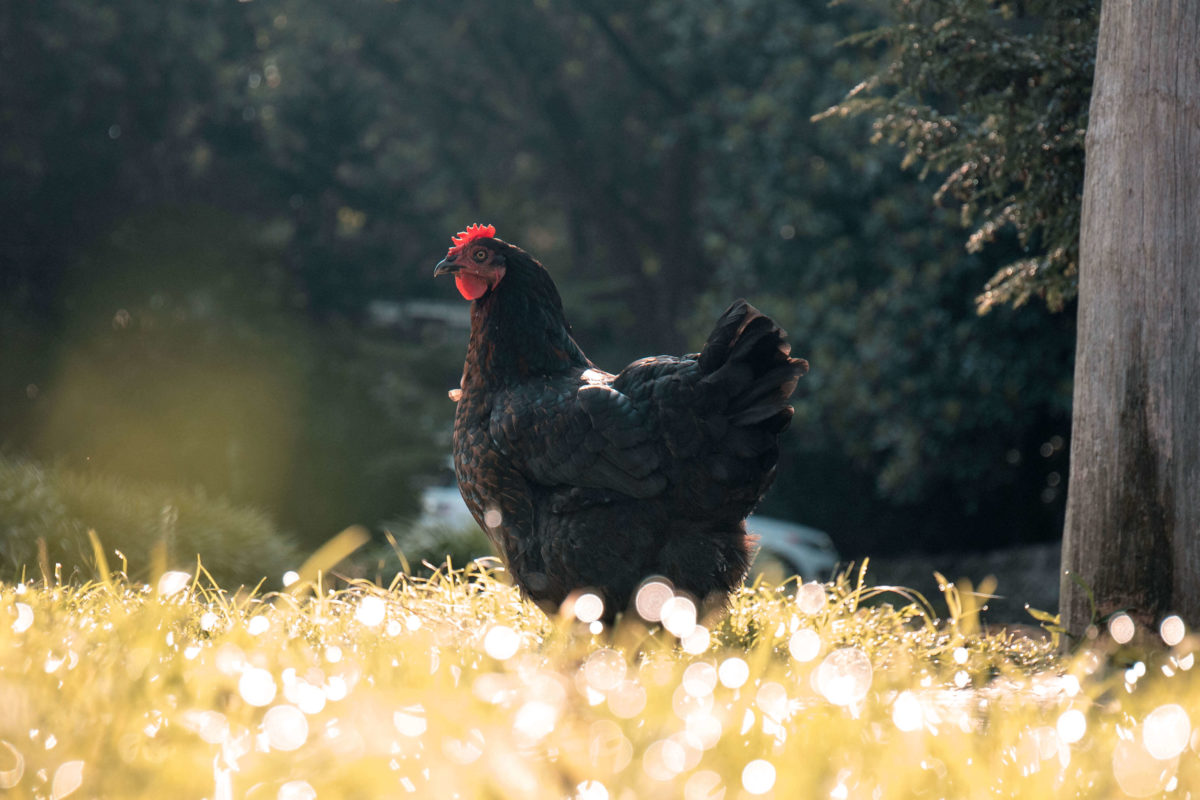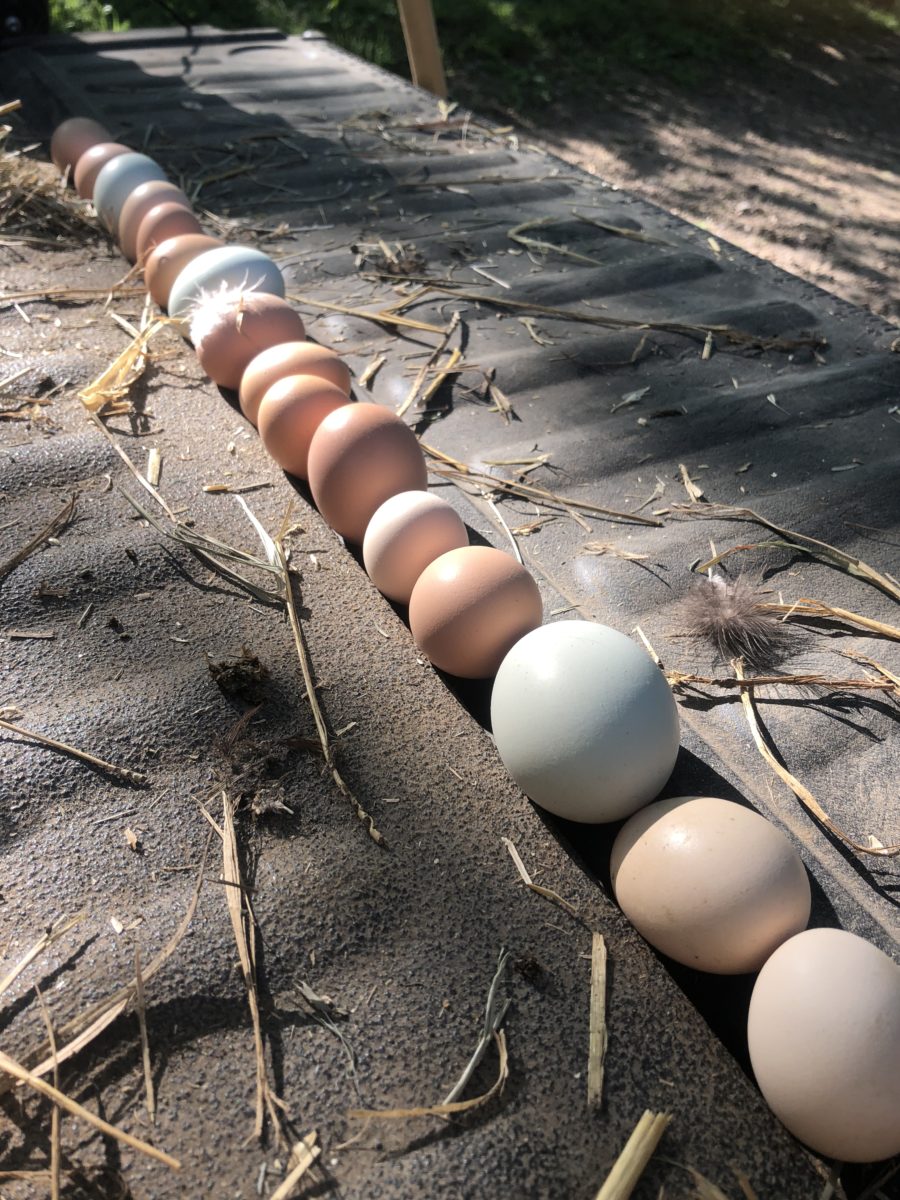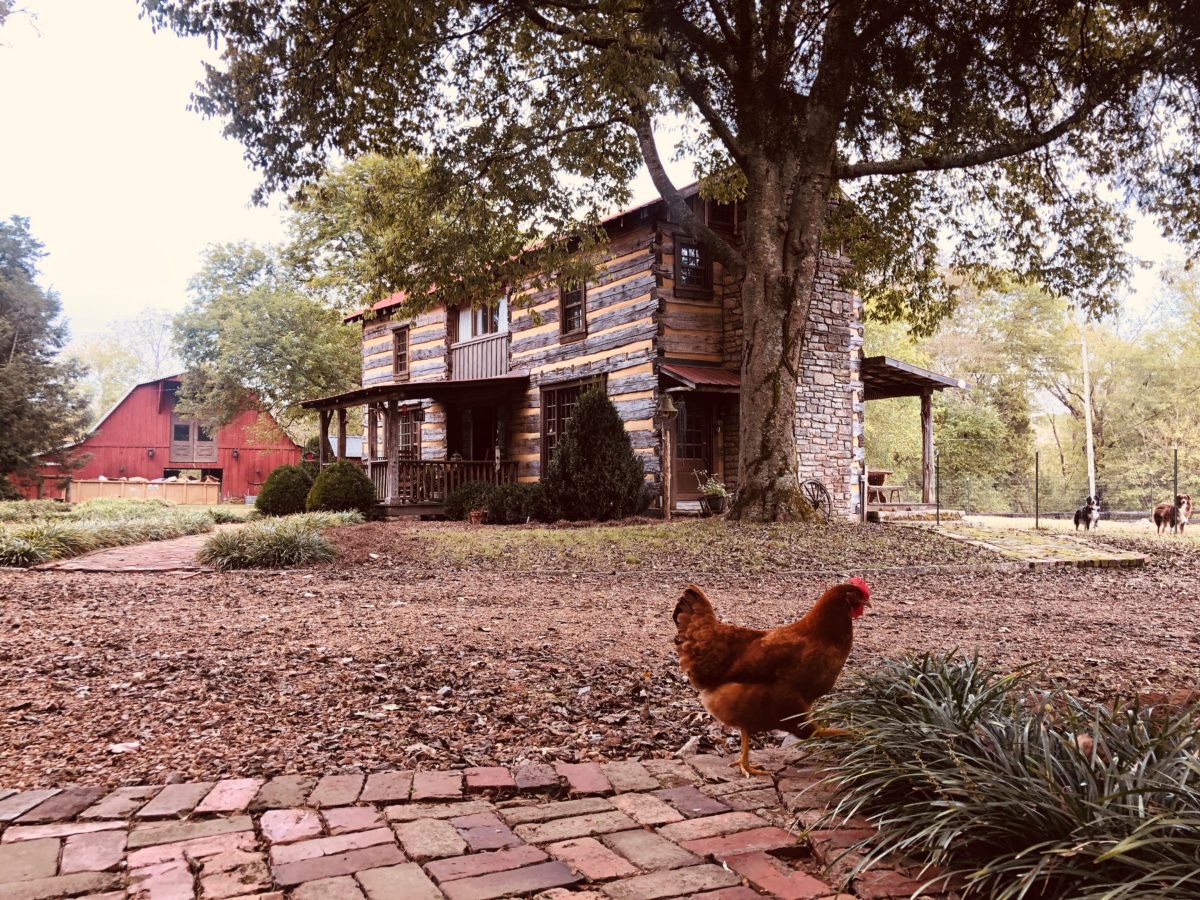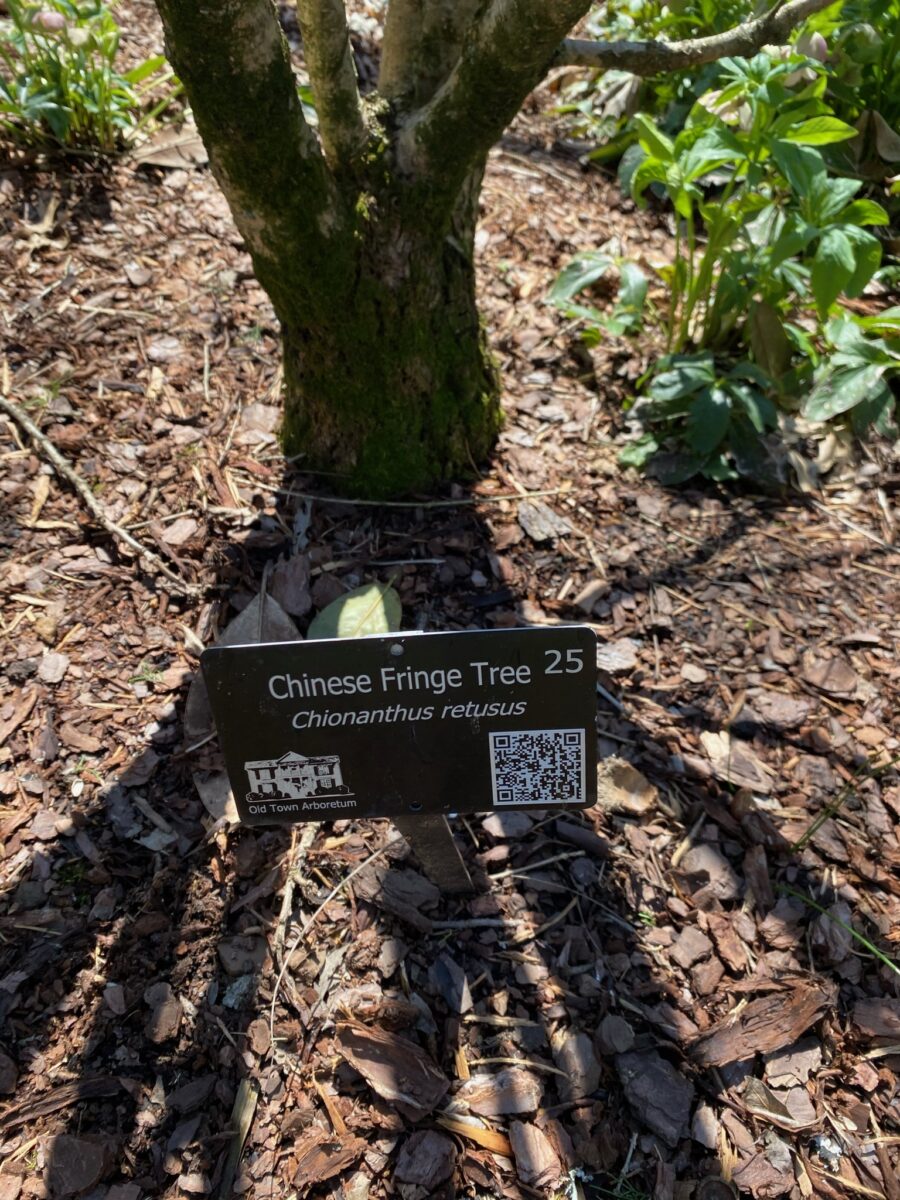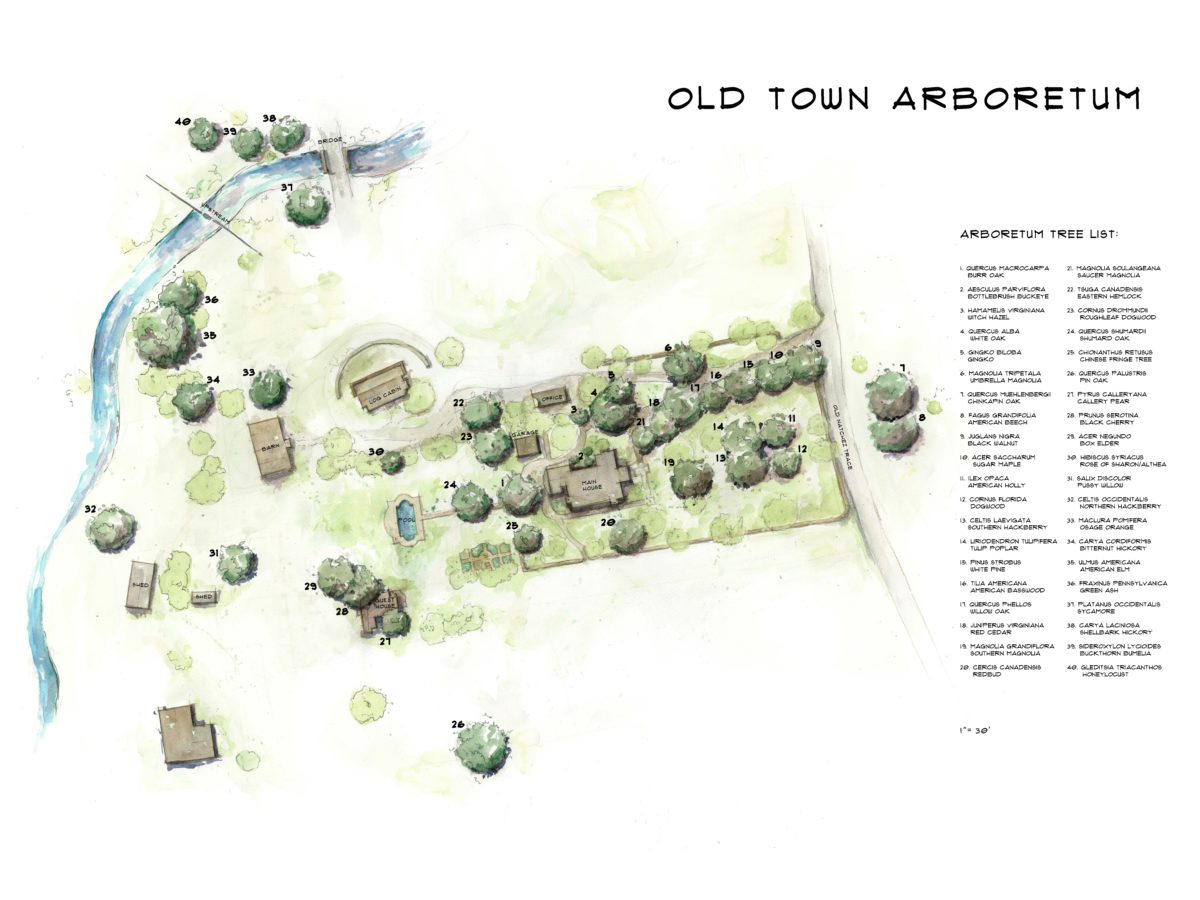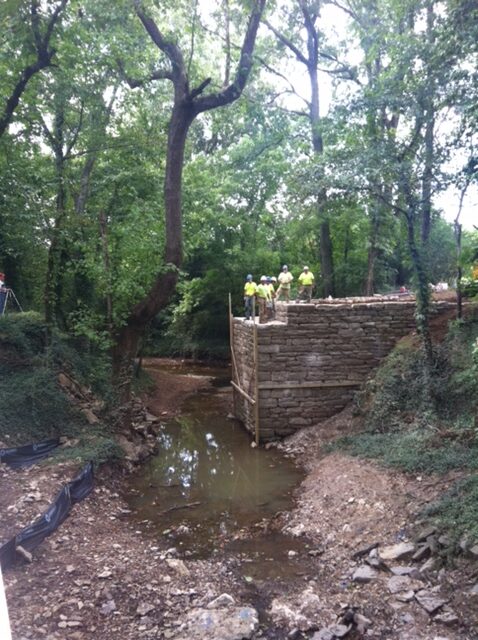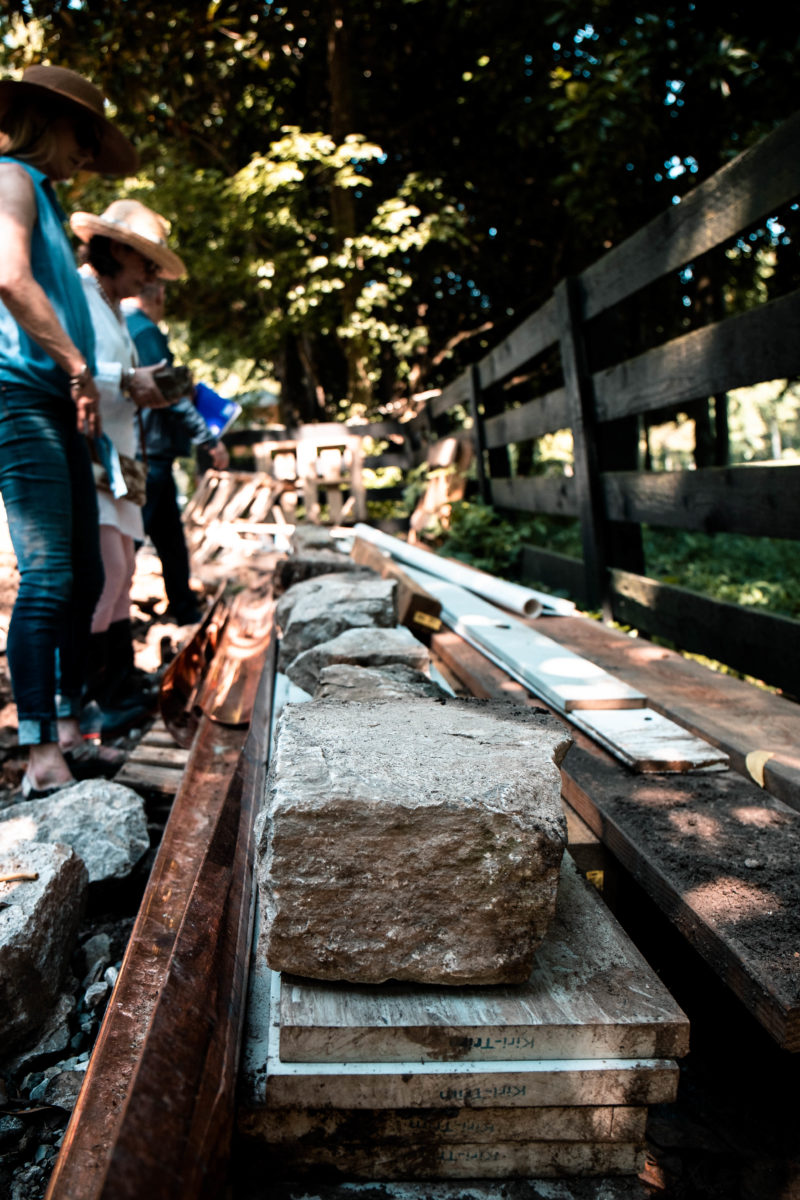Tracy and Bill Frist are committed conservationists and preservationists. Their lives are centered around the oneness of nature in the most holistic sense and they believe that honoring the past provides rich wisdom to live more fully in the present and to prepare for the future.
Their conservation is grounded in the ethical use, sensitive maintenance, and nurturing protection of the valuable natural resources at Old Town in Tennessee and the Farm at Sinking Creek in Virginia — the water, the land, the wildlife, the trees, the grasslands, and the air.
Both Tracy and Bill are proudly engaged with The Nature Conservancy (TNC). Tracy serves on the Tennessee state board of TNC and Bill serves as Chairman of the TNC Global Board of Directors.
Bill has previously served on the Board of Regents for the Smithsonian Institution. In addition, he has served on the boards of the National Museum of the American Indian, the Smithsonian Museum of Natural History, and the Smithsonian’s National Zoo & Conservation Biology Institute.
Tracy serves on the Board of the National Trust for Historic Preservation, where for over 70 years they have worked to save America’s historic sites. Tracy chairs the Preservation and Historic Sites committee and is a member of the 75th Anniversary committee. In addition she is an active board member of Heritage Foundation of Williamson County, whose mission is to preserve and share regional history, local historic places and signature events that carry on our community traditions and cultural heritage.
Old Town in Tennessee
Old Town is 41 acres of pasture and woods. The same conservation practices as described above are followed at Old Town. We engage in rotational grazing for our livestock, moving among our ten pastures. We have fenced our waterways and established riparian buffers along Brown’s Creek which flows through the property as well as the Harpeth River which forms our eastern border. We have made small purchases of adjacent land to ward off potential development.
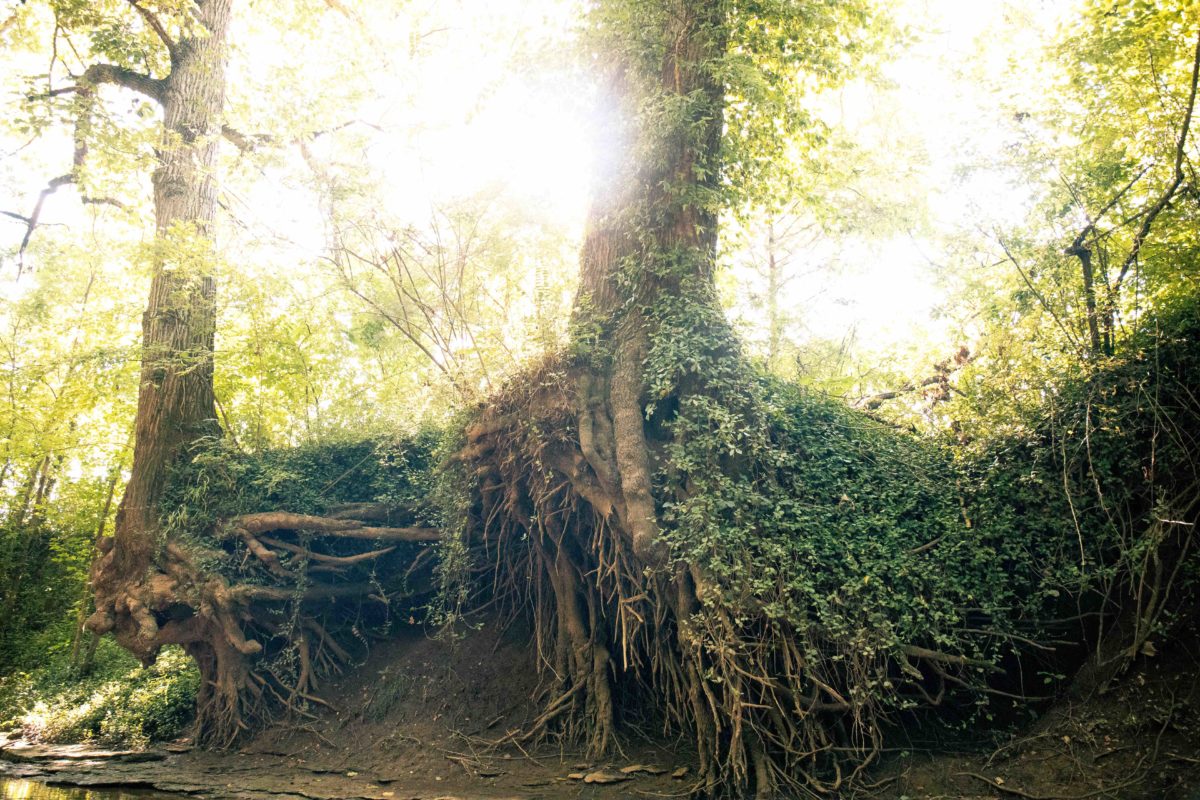
We work hand in hand with the Harpeth Conservancy, which for more than 18 years has monitored, restored and protected the State Scenic Harpeth River and its tributaries. The Conservancy engages in land development decisions, promotes smart growth and agricultural management practices, designs stream restoration plans, assesses sewer and drinking water challenges, conducts river studies, ensures pollution threats are removed, promotes recreation and public education, and serves as a catalyst for effective statewide conservation policies. We believe, as does the Conservancy, that with a community effort, we can restore and maintain a healthy and biologically important river in the heart of one of the fastest growing regions of the U.S.
We are also working with Southeastern Grasslands Institute to create an understanding of area biodiversity and ecology, aid in the development of educational and outreach material, and develop a baseline which will inform future savanna-woodland-meadow restoration. Read more about our partnership with SGI here. Below is a video of SGI’s Executive Director explaining how one species of plum tree on Old Town’s property was likely here when the Mississippian culture lived here over one thousand years ago.
The Old Town Arboretum consists of more than seventy trees between the Harpeth River and the main house, celebrating age and rich diversity. The enveloping trees that overhang the entirety of the Natchez Trace as it runs along the property set a serene and spiritual aura for visitors and passers by alike.
We free range our chickens, and provide natural habitat for turkey. The woods and creek and river provide a natural habitat for birds of prey. The owls are our favorite.
Preservation
At Old Town, preservation is the grounding principle. We honor the preservation of the tens of thousands year-old Harpeth River, the thousand year-old Mississippian culture Indian mounds and hundreds upon hundreds of limestone box graves, the 1801 dry-stacked stone bridge, and the 1846 Thomas Brown House and the adjacent smokehouse. The Old Town Heritage Project, in affiliation with Middle Tennessee State University, has the purpose of scholarly research and sharing new knowledge with others as active ongoing research findings become available. As stewards of this property, we are committed to preserving and perpetuating, but also especially sharing with others what we learn as we preserve and study and honor what has passed before.
Farm at Sinking Creek in Virginia
The Frists’ Farm at Sinking Creek comprises 880 acres of pastures, forests, and streams in southwest Virginia.
Our preservation efforts actually began with Bellevue, the 1821 home we love in Sinking Creek, Virginia. The Federalist-style home with Greek Revival influence was built by Thomas Wylie, its bricks hand-made on the property. The separate standing, one-room doctor’s office cottage stands proudly in front of the two-storied brick home.
One mile away at the site of the Farm at Seeking Creek was the original poorhouse for the region, active throughout the late 1800s until the mid 1930s.
Federal wetlands. The Farm has 64 acres of federally protected wetlands, protected since 2009. These gorgeous, marshy wetlands protect flora and fauna. They absorb pollutants and improve water quality, provide fish and wildlife habitats, store floodwaters, and during dry periods maintain the surface water flow of Sinking Creek, which meanders through the pastures and woods of the farm. They enrich biodiversity by providing a rich habitat for animals and plants. We love walking along these wetlands, in wonder of the constantly altering landscape of ponds coming and going, water trickling over beaver dams, wildflowers appearing out of nowhere, birds nesting, hawks flying over, and waterfowl pausing on their way somewhere.
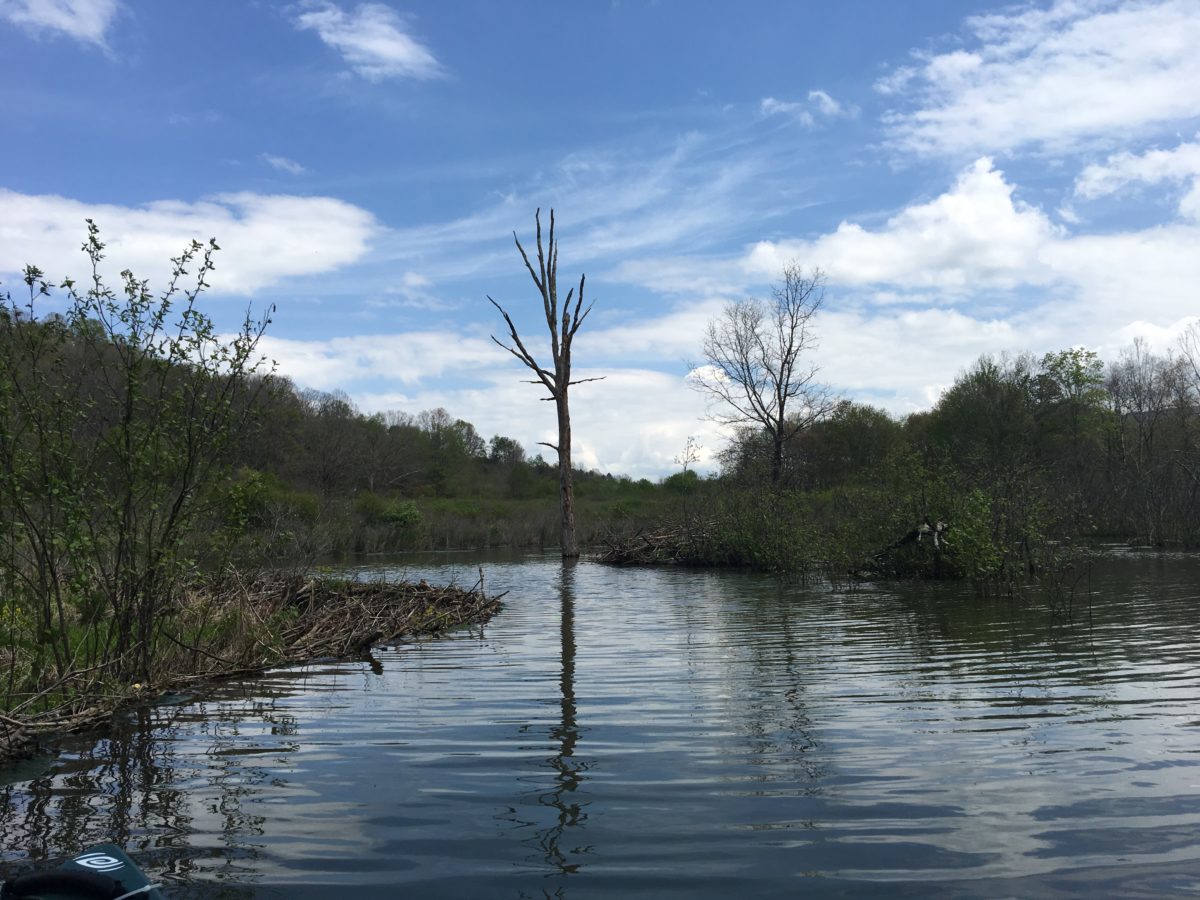
Forestry management. Approximately 380 acres are wooded and are under forest management with attention to best practices in consultation with The Virginia Department of Forestry. Our forests are contiguous to the Jefferson National Forest, which when combined with the adjacent George Washington National Forest covers 1.8 million acres of land, one of the largest areas of public land in the eastern United States.
Natural Resources Conservation Service (NRCS). We have worked with the NRCS over the past 15 years to implement a series of specific conservation plans for over 400 acres to protect and manage our rich natural resources including water, land, trees and riparian buffers. The consistent implementation of these conservation practices has improved water and air quality, prevented erosion, restored our scattered wetlands, enhanced our pastures, and greatly expanded the diversity of wildlife.
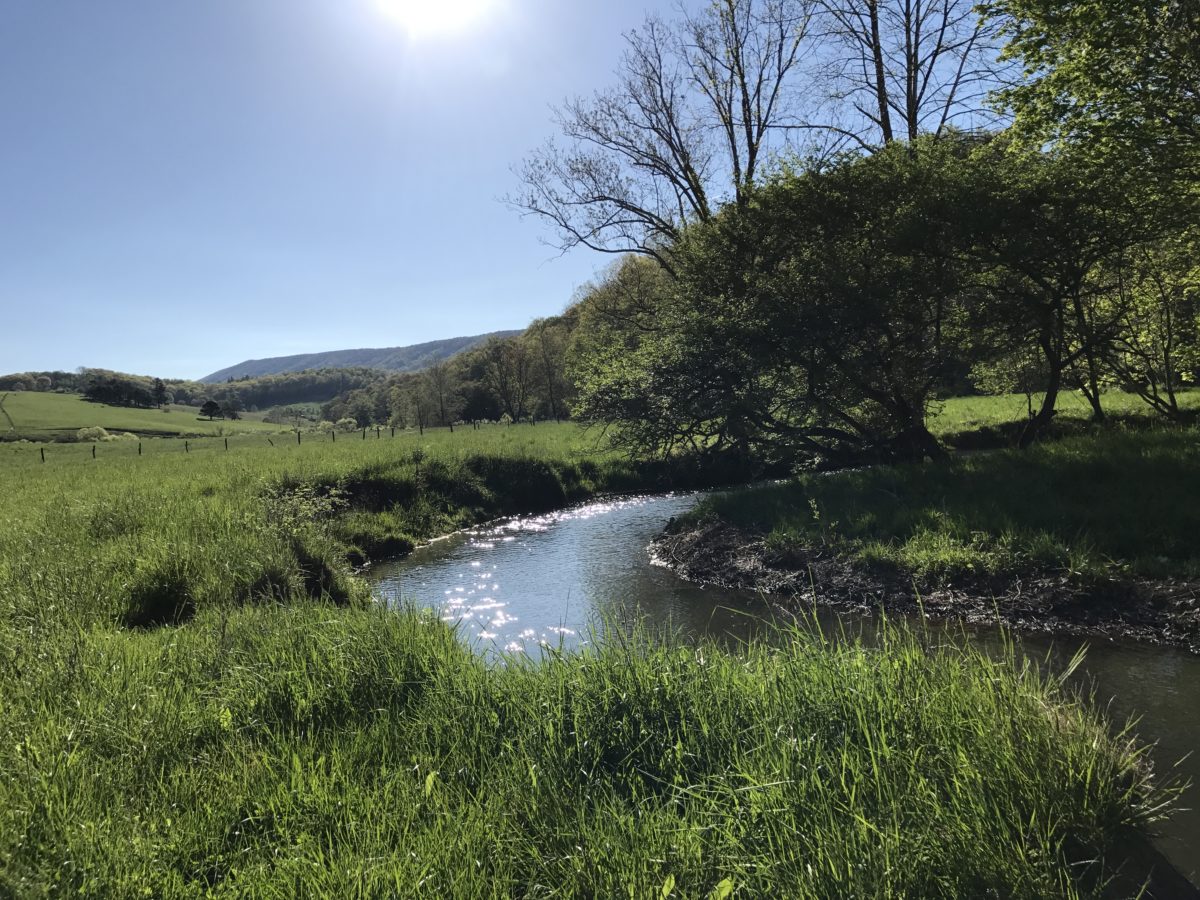
Water. Sinking Creek gracefully runs through woods and through pastures adjacent livestock. Over the past 15 years, Tracy has overseen exacting implementation of a comprehensive riparian buffer program. Thousands of trees have been planted, establishing biologically diverse buffers along the entirety of Sinking Creek, from 30 feet to as much as 400 feet in width.
These riparian buffers protect water quality by reducing the amounts of sediment, nutrients, and pollutants that run off into the creek, which flows into the New River and ultimately into the Mississippi River. We truly believe our contribution, though small, makes the water cleaner for thousands of miles of waterways and hundreds of thousands of people beyond us. The riparian buffers, replete with deep rooted natural grasses, also serve as rich habitat and wildlife corridors.
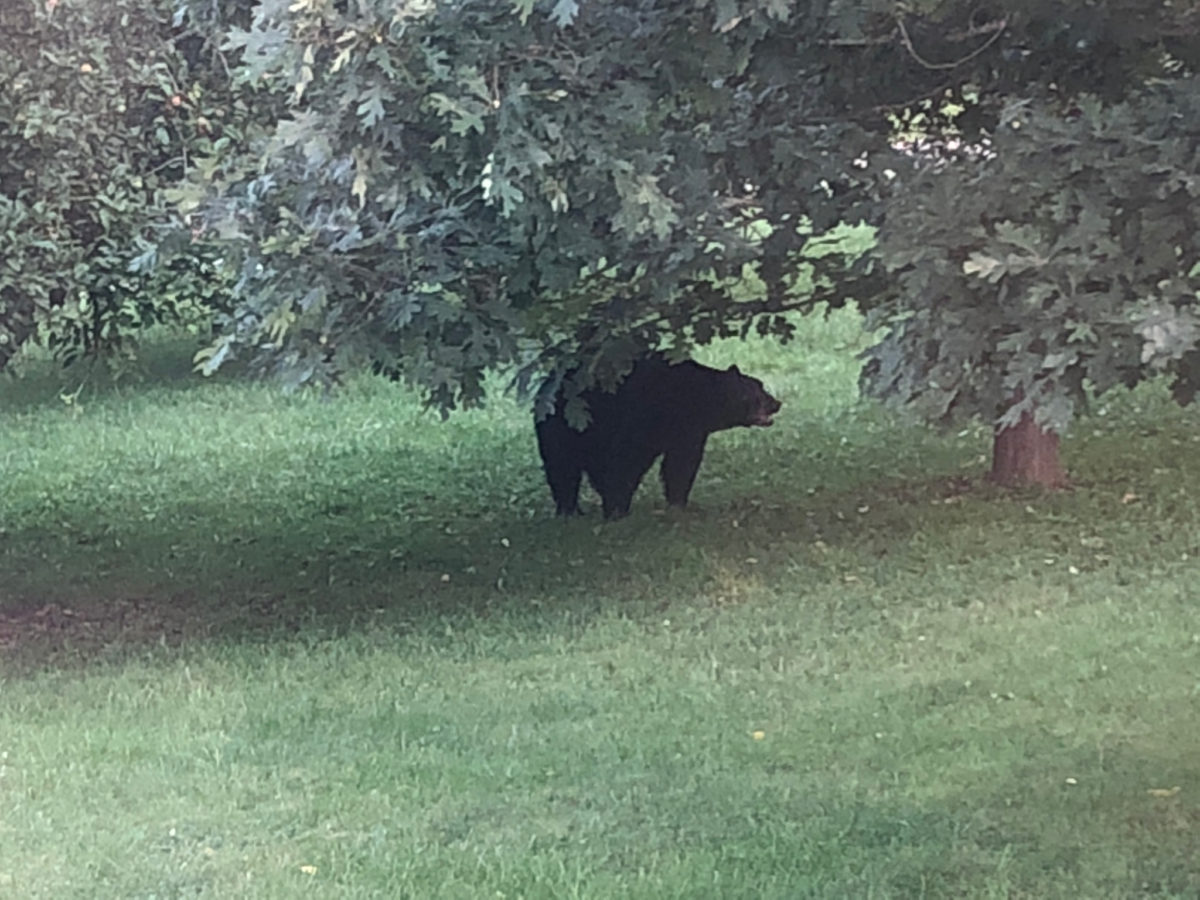
Species diversity. Species include beaver, white-tailed deer, bear, bobcat, bald eagles, white-nosed ferret, black otter, weasel, spiny mussel. We have 5 endangered species of plant including the green monkey flower (formerly on extinct list but recently actively recovered). We have identified over 40 species of trees.
Hardwood forest ecosystem. Working with the American Chestnut Foundation (TACF), we in 2017 initiated a planting program at the farm. Over the past 33 years, TACF has created potentially blight-resistant American chestnuts. The Foundation uses a traditional “backcross” breeding method to incorporate the genes for blight resistance from the Chinese chestnut into the American chestnut while maintaining the growth characteristics of the American tree.
In the early 1900s, the Asian chestnut blight infested the giant (growing 90 to 100 feet) American chestnut tree in the eastern United States and decimated it within two decades. The American chestnut once covered 200 million acres of forest from Maine to Georgia. Scientists estimate that one out of four hardwood trees in our eastern forests were American chestnut prior to the blight.
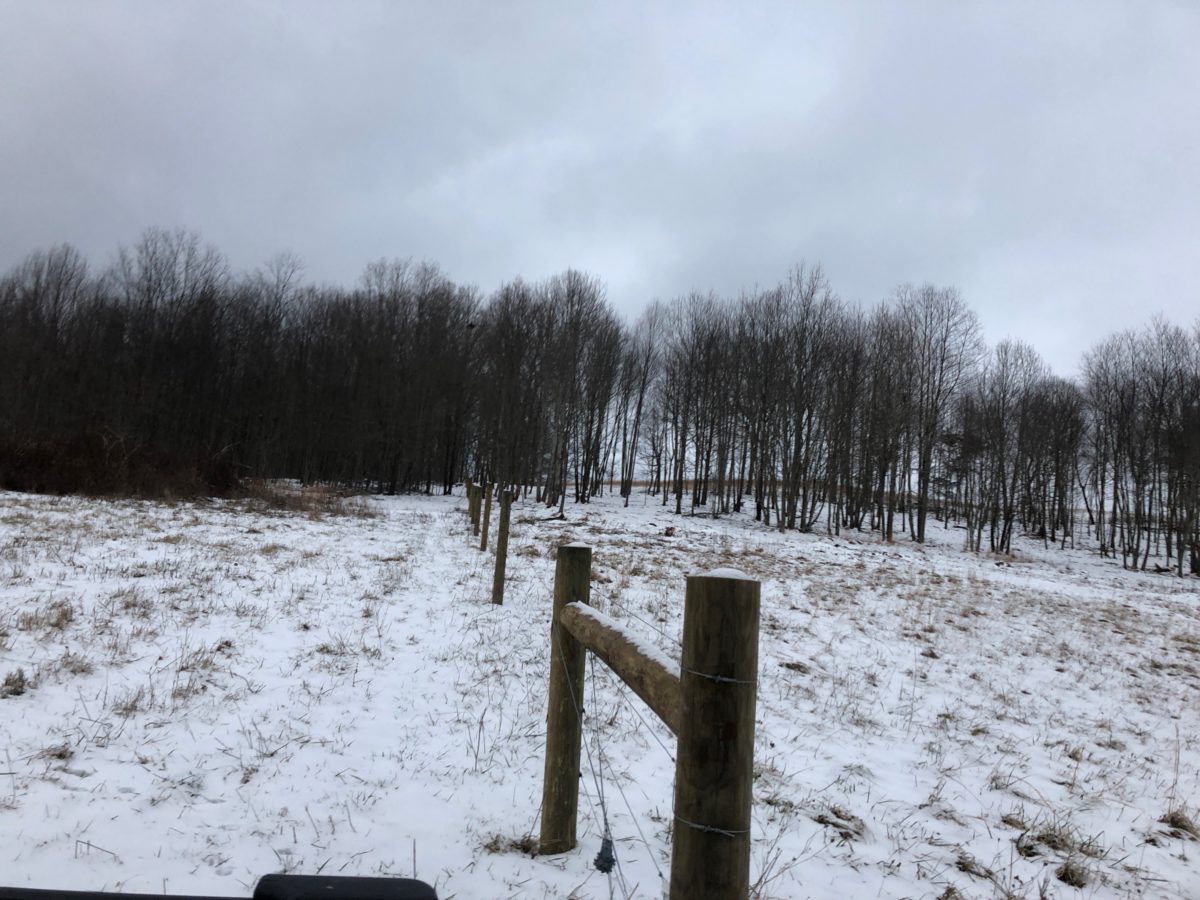
Silvopasture. We have actively integrated pasture into existing woodland, creating a 14-acre actively managed silvopasture. Silvopasture (Latin, silva forest) is the agroforestry practice of integrating trees, forage, and the grazing of domesticated animals in a mutually beneficial way. It is known that properly-managed silvopasture can increase overall productivity and long-term income due to simultaneous production of trees, crops, forage, and livestock. Moreover, it provides the environmental benefit of carbon sequestration. For educational purposes, we have left an adjacent 14 acres of woodland unmanaged as a control for study.
No seed farm. We are a no seed farm, i.e. we do not overseed our pastures. The pastures and open lands are comprised entirely of indigenous grasses with natural deep root base which contributes to health and greater resistance, increased carbon absorption, and less erosion.
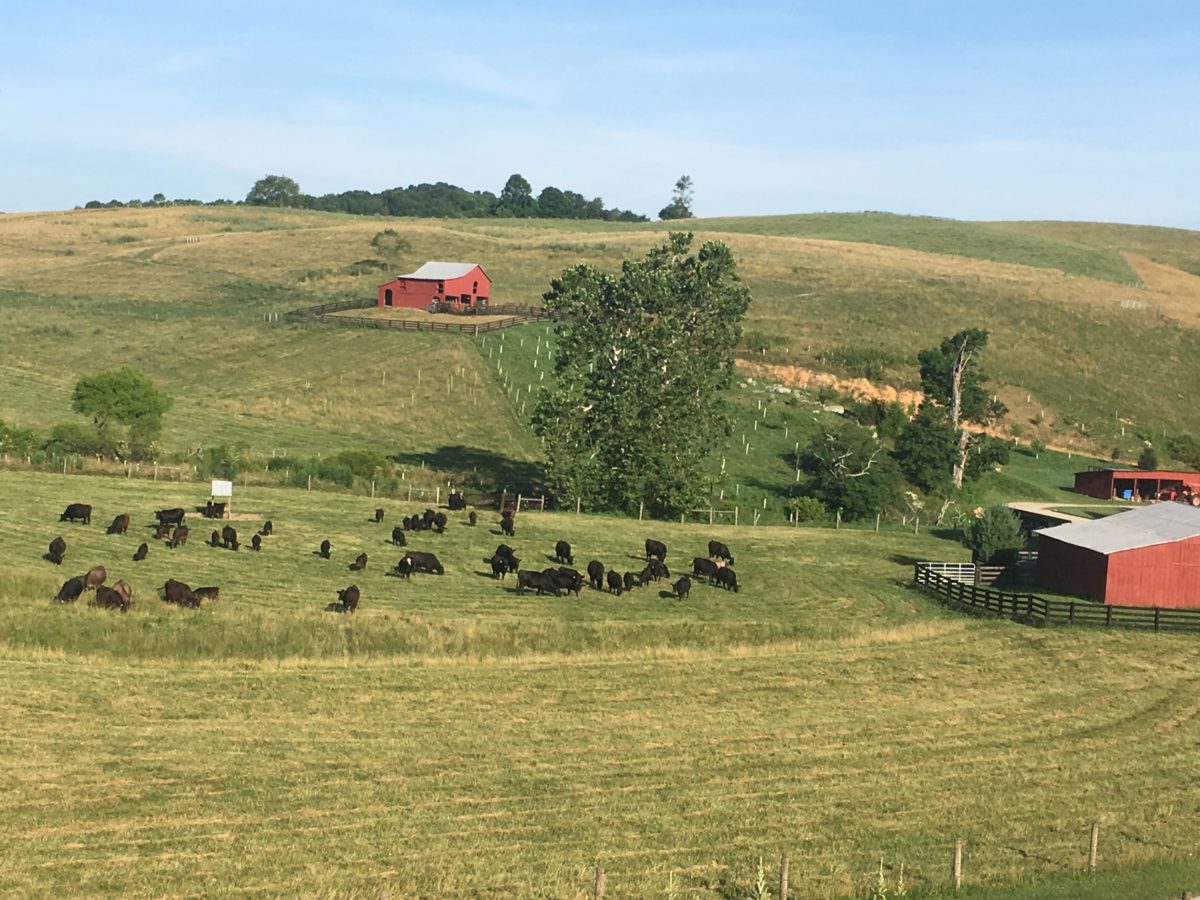
Rotational grazing. For years we have engaged in line and circle rotational grazing among our 17 actively managed pastures, moving livestock as often as every three days and keeping grasses more than 8 inches to maximize health of root systems. We do not use pesticides and do not spray.
Grass-fed beef. Our cattle are multigenerational and are pure grass-fed (not finished on grain). Our cattle do not receive antibiotics or vaccinations. We adhere to Joel Salantin organic guidelines and have Kind Killed certification, which minimizes cortisol elevation.

Other preservation activities
In addition to the structures on the land in Tennessee and Virginia, we are active in other preservation efforts. Most recently, Tracy was instrumental in the restoration of the Spring House at Carnton Plantation in Franklin, Tennessee. The spring house is used as a teaching resource for the thousands of visitors who visit the historic plantation of the Franklin Battlefield each month.
Parked out front at Old Town, if not on a trip over to Loveless Café, you will find Tracy’s 1951 fully restored Chevrolet truck.


